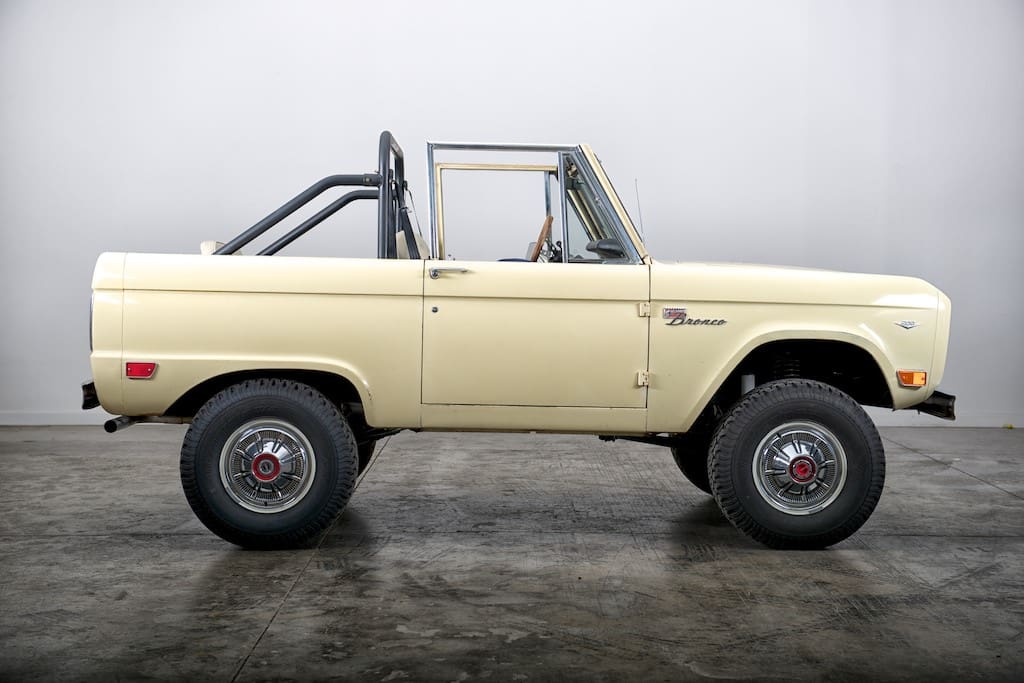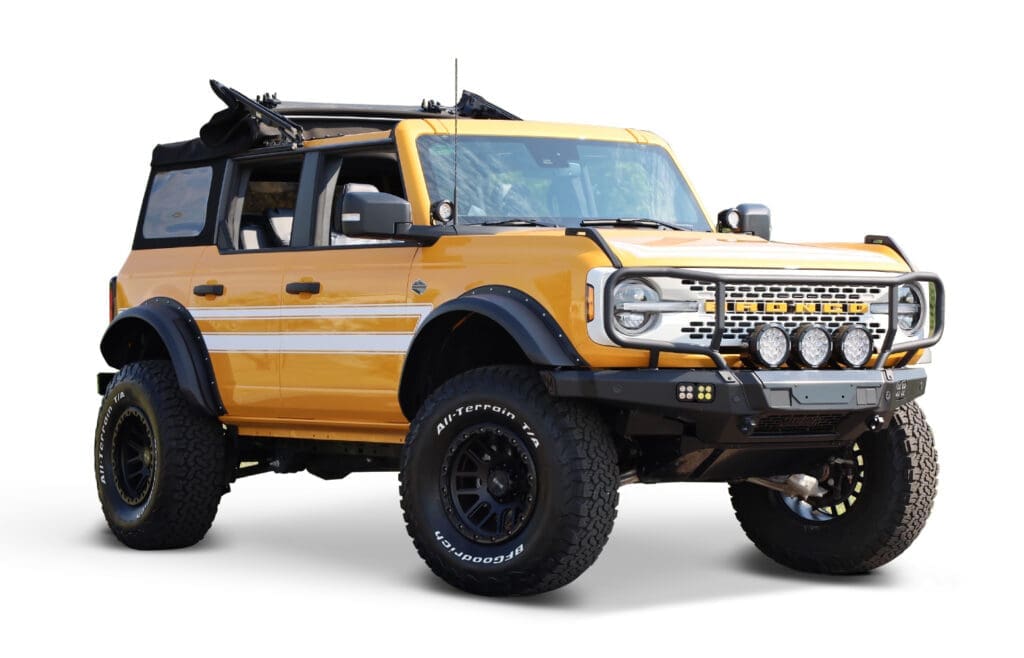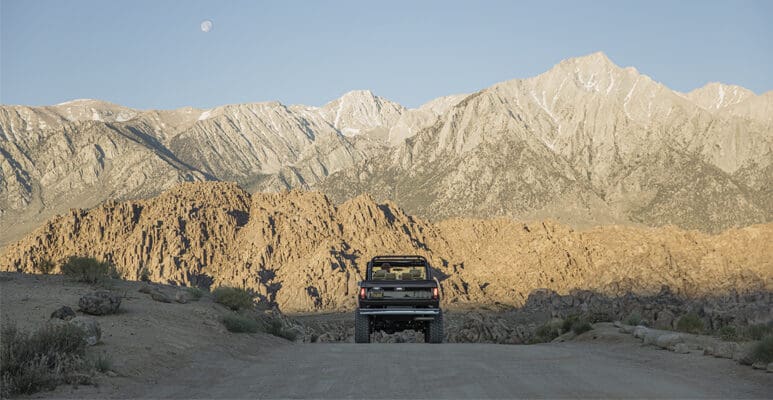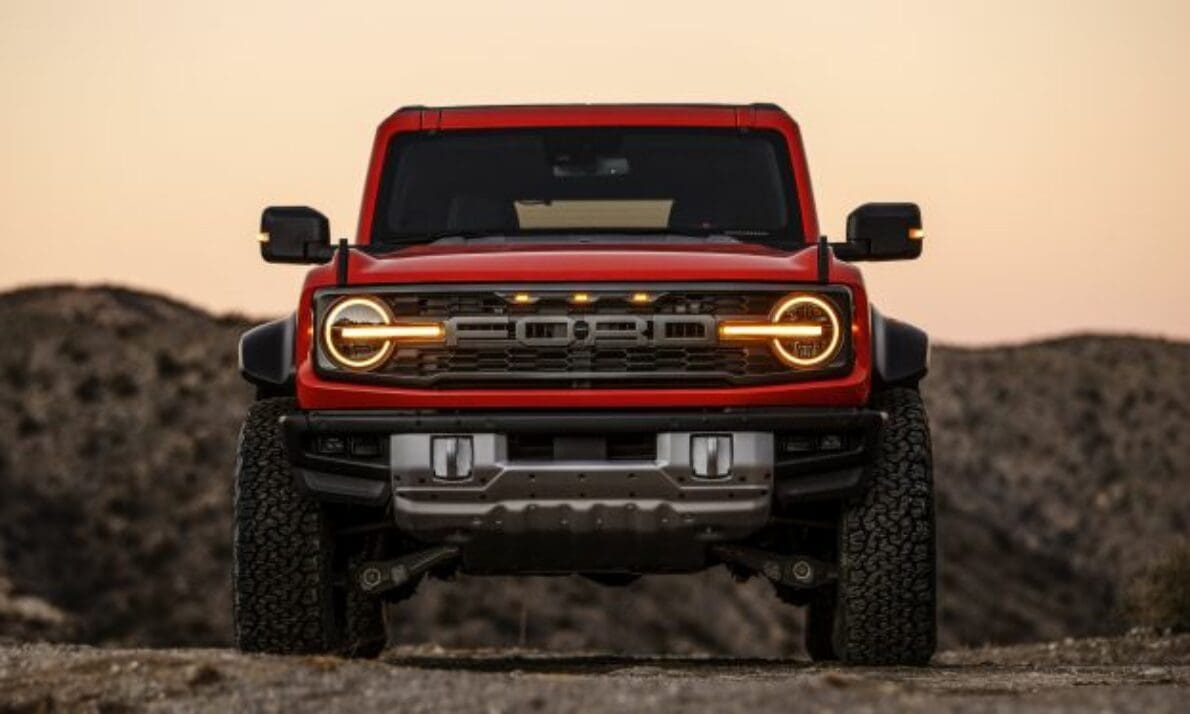The Ford Bronco has been a staple of American car culture since its introduction in 1966. We’re also big fans of the Bronco, you might have noticed.
Originally designed to compete with other rugged off-road vehicles like the Jeep CJ and International Harvester Scout, the Bronco quickly gained a following for its versatility and practicality.
Over the years, the Bronco has undergone many changes and updates, with each new generation introducing new features and improvements to keep it ahead of the rest. From the classic first-gen V8 models to the modern updates of the sixth gen V6 Raptor, the Bronco has continued to capture the hearts of car enthusiasts and off-road adventurers alike.
The Bronco has not only been at the very heart of car culture for over 50 years, but it’s also been featured in popular culture, making numerous appearances in movies and TV shows like “The O.C.” and “The Rockford Files” as well as featuring in hit TV show, “Lost”, “Terminator 2” and serving as the inspiration for the famous chase scene in the movie “O.J. Simpson: Made in America.” With its rugged design, powerful engines, and long history, the Bronco has become an iconic symbol of American automotive culture. It’s no wonder that this car is now even the drive of choice for many A-listers the world over, from Ted Nugent to Simon Cowell and Jay Leno. Good choice y’all.
In this article, we’ll explore the Ford Bronco by year and generation, highlighting the features that make each one stand out. Whether you’re a fan of the classic first-generation models or prefer the modern updates of the sixth generation, there’s a Bronco out there for everyone.
First Generation Ford Bronco

The first-generation Ford Bronco, which was introduced in 1966, was designed to compete with the Jeep CJ-5 and the International Harvester Scout. It was a simple, rugged, and versatile SUV that quickly became popular among off-road enthusiasts, farmers, and ranchers. The first-generation Bronco was produced from 1966 to 1977, and during that time, it underwent several updates and changes. Though let’s be clear, this car was built to last.
Out of all the years of the first-generation Bronco, 1977 is widely considered to be the best year although anything from 74 is not only sought after, but more widely available. The ‘77 model stands out due to the many improvements that were made to the vehicle, including the introduction of a V8 engine, which provided more power and torque than the previous inline-six engine. Additionally, the 1977 Bronco featured an improved suspension system, which provided a smoother and more comfortable ride, especially on rough terrain.
The interior of the 1977 Bronco was also updated, with a new dash layout and improved seating options. The seats were more comfortable and supportive, and the steering wheel was updated to a more modern design. Overall, the 1977 Bronco was a significant improvement over the previous years, and it remains a sought-after model among collectors and enthusiasts although anything first gen will always find a new home.
In fact this first gen has been a cornerstone of our business for many years and is how Bryan Rood got started with building the Classic Ford Bronco restomod business back in 2005. Although the 302 series that we push out now does cost slightly more than the $2000 1966 list price!
In summary, the first-generation Bronco was a rugged and reliable SUV that set the standard for off-road capability and versatility and continued to lead in its class with each year that followed. While every year of the first generation had its unique features, the 1977 model year stands out as the best due to its V8 engine, improved suspension, and updated interior. It remains a beloved classic among Ford Bronco enthusiasts today.
Second Generation Ford Bronco

The second generation of the Ford Bronco was produced for only two years, from 1978 to 1979 and was based on the Ford F-100 pickup truck chassis allowing for a wider wheelbase. Despite its short production run, it featured many significant updates and changes over its predecessor such as dual and heavy duty shocks, rear sway bar and other F-Series components.
One of the standout features of the second-generation Bronco was its wider body, which increased interior space and improved stability on the road. The 1978 Bronco also featured larger engine options, including a 351 cubic inch V8 engine, and full time 4×4 which provided more power and performance than the previous generation.
The drivability of the second-generation Bronco was also improved, thanks to the introduction of new features such as power steering and front disc brakes. These enhancements made it easier and more comfortable to drive, especially on longer trips or off-road adventures.
Out of the two years of production, the 1978 model is considered the best of this generation. Its wider body, larger engine options, and improved drivability made it a more refined and capable vehicle than the previous generation.
In summary, the second-generation Ford Bronco may have had a short production run, but it made significant improvements over its predecessor.
Third Generation Ford Bronco
The third generation of the Ford Bronco was introduced in 1980 and marked a significant departure from its predecessors in terms of design and technology. The 80’s saw a new era of design, and so the new Bronco had a more aerodynamic body style. It was also designed to be more fuel-efficient, with reduced weight and an emphasis on improved handling and performance.
The third generation of the Bronco featured several engine options, including a 4.9L straight-six, and a 5.8L V8. It was also available in a variety of trim levels, including the base model, XL, XLT, and Eddie Bauer edition, which offered a more luxurious interior and stand out two-tone paint job that is now popular with collectors.
Out of all the years of the third-generation Bronco, the 1985 model year is considered the best. This is due to the introduction of a new suspension system that improved the vehicle’s handling and stability, especially on rough terrain. The 1985 Bronco also featured a more refined interior, with updated seating options and an improved dashboard layout.
Overall, the third-generation Bronco was a significant improvement over its predecessors in terms of design, performance, and fuel efficiency.
Fourth Generation Ford Bronco
The fourth generation of the Ford Bronco was introduced in 1987, had a more modern, streamlined appearance, a shorter wheelbase, and was equipped with a range of advanced safety features.
One of the most significant updates in the fourth-generation Bronco was the introduction of electronic fuel injection, which replaced the carbureted engines used in previous models. This not only improved fuel efficiency but also provided more reliable engine performance and easier starting in cold weather. This release also saw the introduction of rear ABS and button control 4×4.
Another important improvement was the increased towing capacity, which made the Bronco more versatile and practical for those who needed to haul heavy loads. The 1991 model year is much sought after thanks in part to its improved towing capacity, which was increased to 7,000 pounds.
The 1991 Bronco also featured other updates and improvements, including a revised interior with new seating options and improved sound insulation. It was available in several trim levels, including the base model, another Eddie Bauer edition, a Nite edition Bronco, and best of all a Silver Anniversary Edition Bronco to celebrate its 25th year in production.
Fifth Generation Ford Bronco
The fifth generation of the Ford Bronco was the last to be produced for another twenty five years, with production ending in 1996. This generation represented a continuation of the updates and improvements seen in previous generations, with an emphasis on improved performance and styling.
One of the key features of the fifth-generation Bronco was its powerful V8 engine, which provided excellent acceleration and towing capacity. The 1996 model year is considered the best of this generation, thanks in part to its 5.8L V8 engine.
In addition to its powerful engine, the 1996 Bronco also featured updated styling, both inside and out. The exterior was given a more modern look, with new front and rear bumpers, while the interior received updated seating options and an improved dashboard layout.
The 1996 Bronco was also available in several trim levels, including the base model, XL, XLT, and Eddie Bauer edition, which offered a more luxurious interior and additional features, such as power windows and locks, air conditioning, and a premium sound system.
Overall, the fifth-generation Bronco was a fitting end to a legendary line of SUVs.
The Bronco was then discontinued to make way for the Ford Expedition in 1997 that was launched to better compete with Chevrolet’s new vehicles, the GMC Suburban and GMC Yukon. Sixth Generation Ford Bronco
Sixth Generation Ford Bronco

Like the Wrangler, the doors on the Bronco can be easily removed, but unlike the Wrangler’s doors, the Bronco’s are frameless, and with the door-glass wound down, the doors can be carried in dedicated covers within the vehicle while driving doorless. The Ford Blue Oval is replaced by a “Bronco” and “bucking horse” emblem on the tailgate and steering wheel. The Bronco has been redesigned to become a mid-size SUV, with a chassis and powertrain that are now closer in size to that of the Ford Ranger.
After a 25-year break, Ford reintroduced the Bronco nameplate for the 2021 model year with its sixth generation release. The new design pays homage to the 1966-1977 series, and the chief designer even used his own 1976 Bronco as a reference during the design process, with the vehicle being digitally scanned to create the most authentic restyle possible. Positioned as a direct rival to the Jeep Wrangler, the Bronco is available as a two or four-door SUV, with the added versatility of being reconfigurable as a convertible.
In conclusion, the Ford Bronco is an iconic SUV that has captured the hearts of car enthusiasts for over five decades. Each generation of the Bronco has its own unique features and improvements that have contributed to its popularity and long-lasting appeal. From the classic first-generation retro models of days gone, to the modern updates of the fifth generation and now the Raptor with all of the latest features you’d expect to find on any premium or luxury auto, the Bronco has proven to be a versatile and practical vehicle for a variety of uses, from off-roading to daily commuting.
So whether you’re a fan of its rugged, muscular design or the sound and power of its powerful engine, the Ford Bronco remains a popular choice for those seeking a classic SUV with a rich history and a lasting legacy.




